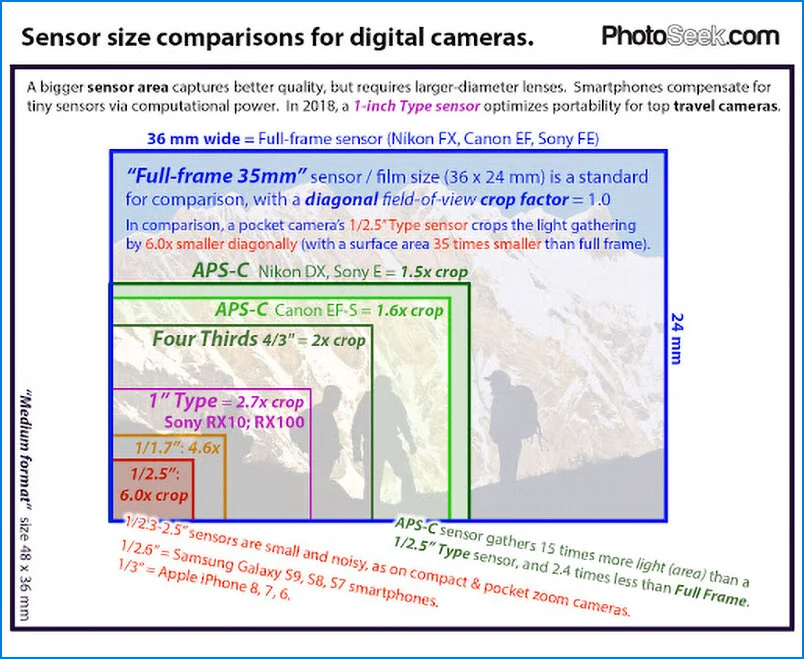The problem with smartphone cameras: Sensor Size
By and large, when you take into account the tiny imaging sensor that they use, the results from any smartphone (cell phone, mobile phone) camera made in the last five years or so—with a few exceptions—are amazing.
The following image from PhotoSeek.com shows the relative size of each of the common sized imaging sensors.
The large outside black outline indicates the relative size of a ‘medium format’ sensor.
The blue outline shows the relative size of a ‘full frame’ sensor.
The green outline indicates the relative size of the sensors used in camera with ‘half frame’ sensors, often referred to as APS-C format camera.
The pink frame shows the relative size of sensors used in compact cameras.
That brings us down to the red rectangle or what is referred to as a 1/2.5” sensor. This is the sensor size used in the flagship smartphone or cell phones.
As you can see, the sensors used in flagship mobile phones is about a fifth of the size of the sensor used in a compact camera. It is a sixteenth the size of a half frame APS-C sensor, and a tiny fortieth of the size of a full frame sensor.
Given the golden rule of imaging sensors that—all else being equal—the larger the sensor the better the image capture due to increased dynamic range and light capture, then you can see why a smartphone (cell phone) sensor has no hope of achieving the result that a half frame or full frame sensor is able to.
Given this, then why do smartphone pictures ‘seem’ to be kind of okay?
Photographs taken by the tiny low-dynamic range sensors in cell phones are generally referred to a ‘computational’ or AI photographs.
All mobile phones contain one or more very fast computers in them that are dedicated to taking the relatively poor-quality images from the tiny sensor and editing them internally to bring them up to an acceptable quality. A quality that is at least good enough for viewing on a 1920 x 1080 screen that is about 6” in size.
To put the sensor size into actual size perspective, the following picture shows the sensor sizes at very close to their correct size against a $2 Australian coin.
The following image will open the PhotoSheek.com site in a new tab.



